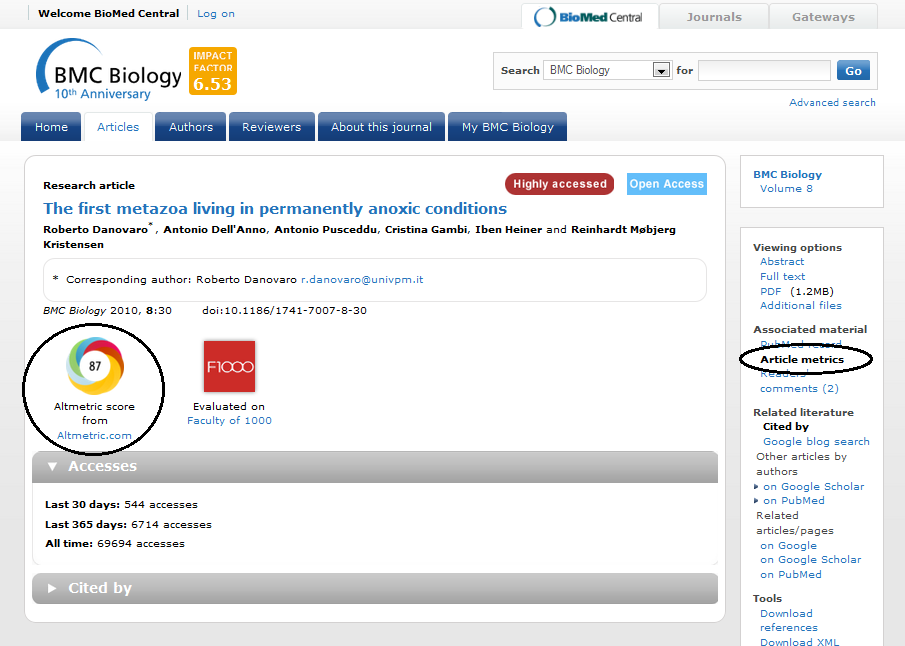The impact of academic research has long been measured using citations, often with the Journal Impact Factor being used to assess individual publications within it. However, the Impact Factor is a journal level – not an article level – metric and, as academic publishing and the surrounding discussion moves increasingly onto the web, novel opportunities to track and assess the impact of individual scientific publications have emerged.
These web-based approaches are starting to offer an article-level perspective of the way research is disseminated, discussed and integrated across the web. The hope is that a broader set of metrics to complement citations will eventually give a more comprehensive view of article impact, and help to make the most relevant and important publications discoverable to individuals, based on their interests.
Altmetric.com is one of a growing number of web-based tools taking a novel approach to the assessment of scholarly impact – it aggregates the mentions on twitter and social media sites, and coverage in online reference managers, mainstream news sources and blogs to present an overview of the interest a published article is receiving online. BioMed Central has today added the Altmetic.com ‘donut’ to the about page of published articles – the donut will display for articles receiving coverage which has been tracked by Altmetric.com, along with an article score (more information is available here).

The donut visualization shown on the ‘about this article’ page aims convey information about the type of attention the article has received – the colours surrounding it reflect the mix of sources (blue for twitter, yellow for blogs etc.). The link takes you to a summary of the activity surrounding the article, including a geographical breakdown of coverage on twitter (Altmetric.com summary for this article is available here).
This summary supplements our existing article-level measures of impact – article accesses and citations are displayed on all ‘about this article’ pages, and links to Faculty of 1000 appear when articles are reviewed. Articles that have been especially highly accessed, relative to their age and the journal in which they were published, are awarded the highly accessed tag.
As more indicators of article performance, visibility and impact emerge, the hope is that authors, readers and funding institutions will be able to assess research impact in a way which is more informed than relying on Impact Factors alone. Research into the web based metrics or ‘altmetrics‘ is a gathering pace, and as more data becomes available, so do attempts to tease apart the relationship between established and emerging measures of impact (high visibility of course does not mean high quality or citation count). We plan to keep adding to this range of metrics and indicators, as they continue to expose a fuller image of research impact.
This is a most welcome addition to BioMedCentral articles. Up-to-date Altmetrics are also automatically included in the PDFs of the articles if you read those with Utopia Documents (Utopiadocs.com). And ‘up-to-date’ means up-to-date, even for PDFs; to the moment you open, or re-open, the PDF.